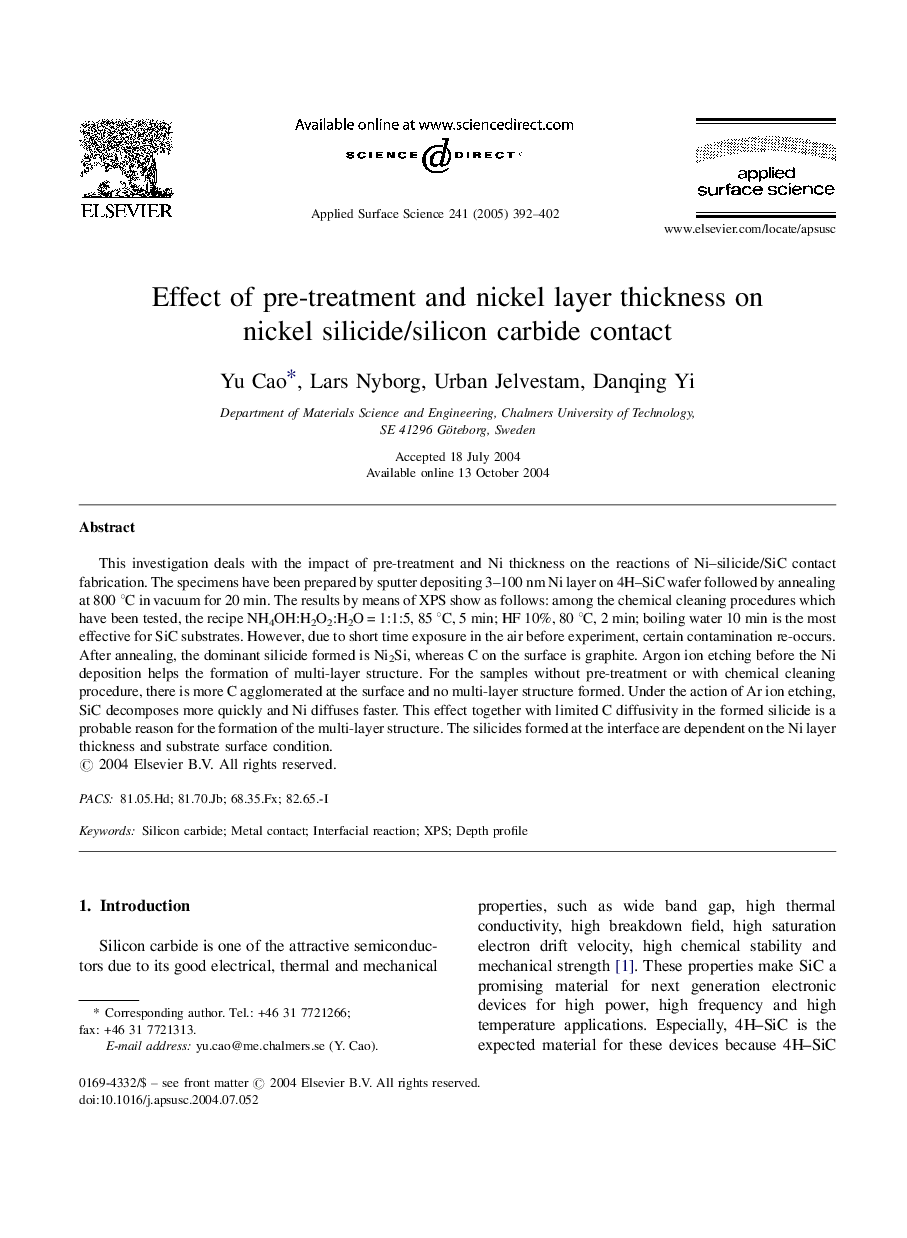| Article ID | Journal | Published Year | Pages | File Type |
|---|---|---|---|---|
| 9567485 | Applied Surface Science | 2005 | 11 Pages |
Abstract
This investigation deals with the impact of pre-treatment and Ni thickness on the reactions of Ni-silicide/SiC contact fabrication. The specimens have been prepared by sputter depositing 3-100 nm Ni layer on 4H-SiC wafer followed by annealing at 800 °C in vacuum for 20 min. The results by means of XPS show as follows: among the chemical cleaning procedures which have been tested, the recipe NH4OH:H2O2:H2O = 1:1:5, 85 °C, 5 min; HF 10%, 80 °C, 2 min; boiling water 10 min is the most effective for SiC substrates. However, due to short time exposure in the air before experiment, certain contamination re-occurs. After annealing, the dominant silicide formed is Ni2Si, whereas C on the surface is graphite. Argon ion etching before the Ni deposition helps the formation of multi-layer structure. For the samples without pre-treatment or with chemical cleaning procedure, there is more C agglomerated at the surface and no multi-layer structure formed. Under the action of Ar ion etching, SiC decomposes more quickly and Ni diffuses faster. This effect together with limited C diffusivity in the formed silicide is a probable reason for the formation of the multi-layer structure. The silicides formed at the interface are dependent on the Ni layer thickness and substrate surface condition.
Keywords
Related Topics
Physical Sciences and Engineering
Chemistry
Physical and Theoretical Chemistry
Authors
Yu Cao, Lars Nyborg, Urban Jelvestam, Danqing Yi,
